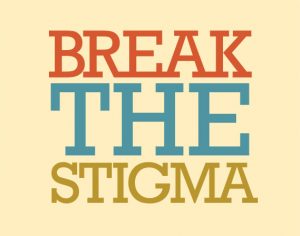Over the years we have progressed to opening up discussions on mental health, but self-harm still remains a symptom of mental illness or distress that’s highly stigmatised. In this post, blogger Aisling O’Connor from This Dream’s Alive writes about the misconceptions around self-harm.
Stereotypes
- It’s not for attention – most people attempt to hide it
- It’s not just for “goths” or “emos”, music taste and style are irrelevant here
- Aside from cutting the skin it includes burning, scratching, hitting and more
- It is not a suicide attempt
- Discussing it won’t “put the idea” in somebody’s head
- It does not just affect teenage girls; it can affect anyone
Aisling’s history with self-harm
I started self-harming in my first year of secondary school. At the time it began as something I would do whenever I was upset or angry. I did it to take all the frustration I was feeling out on myself, and it provided a relief from what I was feeling, and it was strangely calming. I did it in places people wouldn’t see or if they saw a cut, they wouldn’t associate it with self-harm. There would be a tingling sensation in my wrists whenever I wanted to do it, and would nearly tear my hair out if I couldn’t. I used to cover the cuts with make-up or bracelets, and constantly put bio-oil on scars in the hopes that they would disappear.
When I was 13 it would have meant the world to me if someone came to my school and talked about issues like self-harm, because maybe I would have stopped sooner or not started at all, and I certainly would have felt a lot better about myself. I’m not blaming others for something I did to myself but I am saying that we can’t ignore it.

Why people self-harm
Some people see it as a form of self-punishment, while others use it to gain a sense of control they feel is lacking elsewhere in their life, or to display how bad they feel on the inside on the outside. Those who feel numb use it in order to feel something to remind themselves that they’re alive. When stress or pressure builds up self-harm acts as a “release”, and many find physical pain easier to deal with than emotional pain. People self-harm because they don’t know any other way to deal with their problems, and unfortunately it becomes a vicious cycle. You hate yourself so you self-harm, but then hate yourself for self-harming. As hard as it is to overcome there are ways of doing so.
When I stopped self-harming, the Butterfly Project worked best. The project requires you to draw a butterfly where you want to harm, name it after someone you love, and leave it fade away naturally. If you self-harm the butterfly “dies”. It sounds silly, but naming it after people I cared a lot about helped, this can include pets, because I would worry that if I did something would happen to them.
How to stop
- Draw lines where you feel like hurting yourself. These can be washed off in the morning as opposed to fresh cuts or burns
- Make a “calm jar”. Fill an empty jar with food colouring, water and glitter. Shake it when you want to hurt yourself and watch the glitter sink to the bottom.
- Tiger balms cools the skin and causes a tingling sensation which could be close to the feeling you’re looking for, or hold ice to your wrist.
- The urge to self-harm won’t last forever. Try to distract yourself with work, exercise or something you enjoy. By the time you’ve finished the urges will have passed.
- Talk it out, be it with a friend, family member or professional
- Be kind to yourself and reward yourself for not self-harming.
- The Lucky Star Project: make a small origami star every day; white on the days you don’t self-harm and black on the days you relapse. Set a goal to fill a box with as many white stars as possible and reward yourself. The making of the stars themselves can be therapeutic.
- The Paper Chain Project: every day you don’t self-harm you make a coloured chain, and on the days you do you make a white one. You can see how you’re doing by hanging the chain up in your room, and when you feel like relapsing take a look at how far you’ve come.
Think about what you would say to a friend or loved one if you found out they were self-harming. You’d be pretty upset, right? You’d tell them that they don’t deserve to treat themselves that way; that there are other ways of dealing with their problems. Now tell yourself that and believe it.
Getting help
If this post was triggering for you, or you would like to learn more about self-harm, this resource on the Pieta House website can help, and you’ll find more information on 3Ts.
If somebody you know is self harming and you want to help, check out this action plan from Pieta House.
